Barr Robert

Stephen Crane (November 1, 1871 – June 5, 1900) was an American novelist, short story writer, poet and journalist. Prolific throughout his short life, he wrote notable works in the Realist tradition as well as early examples of American Naturalism and Impressionism. He is recognized by modern critics as one of the most innovative writers of his generation. The eighth surviving child of highly devout parents, Crane was raised in several New Jersey towns and Port Jervis, New York. He began writing at the age of 4 and had published several articles by the age of 16. Having little interest in university studies, he left school in 1891 and began work as a reporter and writer. Crane's first novel was the 1893 Bowery tale Maggie: A Girl of the Streets, which critics generally consider the first work of American literary Naturalism. He won international acclaim for his 1895 Civil War novel The Red Badge of Courage, which he wrote without any battle experience. In 1896, Crane endured a highly publicized scandal after acting as a witness for a suspected prostitute. Late that year he accepted an offer to cover the Spanish-American War as a war correspondent. As he waited in Jacksonville, Florida for passage to Cuba, he met Cora Taylor, the madam of a brothel with whom he would have a lasting relationship. While en route to Cuba, Crane's ship sank off the coast of Florida, leaving him marooned for several days in a small dinghy. His ordeal was later described in his well-known short story, "The Open Boat". During the final years of his life, he covered conflicts in Greece and Cuba, and lived in England with Cora, where he befriended writers such as Joseph Conrad and H. G. Wells. Plagued by financial difficulties and ill health, Crane died of tuberculosis in a Black Forest sanatorium at the age of 28. At the time of his death, Crane had become an important figure in American literature. He was nearly forgotten, however, until two decades later when critics revived interest in his life and work. Stylistically, Crane's writing is characterized by descriptive vividness and intensity, as well as distinctive dialects and irony. Common themes involve fear, spiritual crisis and social isolation. Although recognized primarily for The Red Badge of Courage, which has become an American classic, Crane is also known for his unconventional poetry and heralded for short stories such as "The Open Boat", "The Blue Hotel", "The Monster" and "The Bride Comes to Yellow Sky". His writing made a deep impression on 20th century writers, most prominent among them Ernest Hemingway, and is thought to have inspired the Modernists and the Imagists. Stephen Crane was born November 1, 1871, in Newark, New Jersey, to Reverend Jonathan Townley Crane, a minister in the Methodist Episcopal church, and Mary Helen Peck Crane, a clergyman's daughter.[1] He was the fourteenth and last child born to the couple; the 45 year old Helen Crane had lost her four previous children, who each died within one year of birth.[2] Nicknamed "Stevie" by the family, he joined eight surviving brothers and sisters—Mary Helen, George Peck, Jonathan Townley, William Howe, Agnes Elizabeth, Edmund Byran, Wilbur Fiske, and Luther.[3] Family legend maintains that Crane was descended from and named for a founder of Elizabethtown, New Jersey, who had come from England or Wales as early as 1665,[4] and a Revolutionary War patriot Stephen Crane (1709-1780) who served two terms as a delegate from New Jersey to the Continental Congress in Philadelphia.[5] Crane would later write that his father, Dr. Crane, "was a great, fine, simple mind" who had written numerous tracts on theology.[6] Although his mother was a popular spokeswoman for the Woman's Christian Temperance Union and a highly religious woman, Crane did not believe that "she was as narrow as most of her friends or family."[7] The young Stephen was raised primarily by his sister Agnes, who was 15 years his senior.[5] In 1876, the family moved to Port Jervis, New York, where Dr. Crane became the pastor of Drew Methodist Church, a position that he retained until his death.[5] As a child, Stephen was often sickly and afflicted by constant colds.[8] When the boy was almost two, his father wrote in his diary that his youngest son became "so sick that we are anxious about him." Despite his fragile nature, Crane was a precocious child who taught himself to read before the age of four.[3] His first known inquiry, recorded by his father, dealt with writing; at the age of three, while imitating his brother Townley's writing, he asked his mother, "how do you spell O?"[9] In December 1879, Crane wrote a poem about wanting a dog for Christmas. Entitled "I'd Rather Have –", it is his first surviving poem.[10] Stephen was not regularly enrolled in school until January 1880,[11] but he had no difficulty in completing two grades in six weeks. Recalling this feat, he wrote that it "sounds like the lie of a fond mother at a teaparty, but I do remember that I got ahead very fast and that father was very pleased with me."[12] Dr. Crane died on February 16, 1880, at the age of 60; Stephen was eight years old. Some 1,400 people mourned Dr. Crane at his funeral, more than double the size of his congregation.[13] After her husband's death, Mrs. Crane moved to Roseville, near Newark. She left Stephen in the care of his brother Edmund, with whom the young boy lived with cousins in Sussex County. He then lived with his brother William in Port Jervis for several years, until he and his sister Helen moved to Asbury Park to be with their brother Townley and his wife. Townley was a professional journalist; he headed the Long Branch department of both the New York Tribune and the Associated Press and also served as editor of the Asbury Park Shore Press. Agnes took a position at Asbury Park's intermediate school and moved in with Helen to care for the young Stephen.[14] Within a couple of years, several more losses struck the Crane family. First, Townley's wife, Fannie, died of Bright's disease in 1883 after the deaths of the couple's two young children. Agnes then became ill and died on June 10, 1884, of cerebrospinal meningitis at the age of 28.[15] Crane wrote his first known story, "Uncle Jake and the Bell Handle", when he was 14.[16] In the fall of 1885, he enrolled at Pennington Seminary, a ministry-focused coeducational boarding school 7 miles (11 km) north of Trenton,[17] where his father had been principal from 1849 to 1858.[5] Soon after her youngest son left for school, Mrs. Crane began suffering what the Asbury Park Shore Press reported as "a temporary aberration of the mind."[18] She had apparently recovered by early 1886, but later that year a fourth death in six years occurred in Stephen's immediate family when the twenty-three year old Luther died after falling in front of an oncoming train while working as a flagman for the Erie Railroad.[19] After two years, Crane left Pennington for Claverack College, a quasi-military school. He would later look back on his time at Claverack as "the happiest period of my life although I was not aware of it."[20] A classmate remembered him as a highly literate but erratic student, lucky to pass examinations in math and science, and yet "far in advance of his fellow students in his knowledge of History and Literature", his favorite subjects.[21] Not having a middle name like the other students, he took to signing his name "Stephen T. Crane" in order "to win recognition as a regular fellow".[21] Crane was seen as friendly, but also moody and rebellious. He sometimes skipped class in order to play baseball, a game in which he starred as catcher,[22] although he was also greatly interested in the school's military training program. He rose rapidly in the ranks of the student battalion.[23] One classmate described him as "indeed physically attractive without being handsome," but he was aloof, reserved and not generally popular at Claverack.[24] In the summer of 1888, Crane became his brother Townley's assistant at a New Jersey shore news bureau, working there every summer until 1892.[25] Crane's first signed publication was an article on the explorer Henry M. Stanley's famous quest to find the English missionary David Livingstone in Africa. It appeared in the February 1890 Claverack College Vidette.[26] Within a few months, however, Crane was persuaded by his family to forgo a military career and transfer to Lafayette College in Easton, Pennsylvania, in order to pursue a mining engineering degree.[27] He registered at Lafayette on September 12 and promptly became involved in extracurricular activities; he took up baseball once more and joined the largest fraternity, Delta Upsilon, and two rival groups: the Washington Literary Society and the Franklin Literary Society.[28] Crane infrequently attended classes and ended the semester with grades for four of the seven courses he had taken.[29] After only one semester, Crane transferred to Syracuse University where he enrolled as a non-degree candidate in the College of Liberal Arts.[30] He roomed in the Delta Upsilon fraternity house and joined the baseball team. Attending merely one class (English Literature) during the middle trimester, he remained in residence while taking no courses in the third trimester.[31] Putting more emphasis on his writing, Crane began to experiment with tone and style while trying out different subjects.[32] A fictional story of his called "Great Bugs of Onondaga" ran simultaneously in the Syracuse Daily Standard and the New York Tribune.[33] Declaring college "a waste of time", Crane decided to become a full-time writer and reporter. He attended a Delta Upsilon chapter meeting on June 12, 1891, but shortly afterwards left college for good.[34] In the summer of 1891, Crane showed two of his stories to Tribune editor Willis Fletcher Johnson, a friend of the Crane family, who accepted them for the publication. "Hunting Wild Dogs" and "The Last of the Mohicans" were the first of fourteen unsigned Sullivan County sketches and tales that would appear in the Tribune between February and July 1892. Crane also showed Johnson an early draft of his first novel, Maggie: A Girl of the Streets.[35] Later that summer, Crane met and befriended author Hamlin Garland, who had been lecturing locally on American literature and the expressive arts; on August 17 he gave a talk on novelist William Dean Howells, which Crane wrote up for the Tribune.[36] Garland became a mentor for and champion of the young writer, whose intellectual honesty impressed him. Their relationship suffered in later years, however, because Garland disapproved of Crane's alleged immorality.[37]
do you like this author?
What readers are saying
What do you think? Write your own comment on this book!
write a commentWhat readers are saying
What do you think? Write your own comment on this author!
write a commentBook list

over the border a romance
Series:
Unknown
Year:
Unknown
Raiting:
3/5
CONTENTS. Book I. The Girl. CHAPTER I. Assertion . 11. . Recognition. 111. Majesty . IV. Proposal . V. Exaction . VI. Ordeal. VII. Appeal. VIII. Execution . PAGE . I L . . . 12 . . . . 21 0 . 35 . 46 . . 60 . 72 85 Book 11. I. Coincidence . 11. Suspicion . 111. Detention . IV. Preparation . V. Examination . VI. Invalidatiorl . VII. Determination . The Man. viii CONTENTS. Book 111. The Journey. CHAPTER I. Disagreement . . . . . 11. Reconciliation . 111. Companionship . . . IV. Friendship . . V. Affection . . VI. Rejection . VII. Checkmated . . . . VIII. Destiny . . . I, 11. 111. IV. v. VI. VII, VIII. IX. Book IV. The Return. PAGE . 185 . 205 . 214 . 224 m 232 . 244 . 262 279 Tension . . . . Acquittance . . . Enlightenment . . O . . Entangled . . . . Sanctuary . . . . . Expedience . . Victory . . Accomplishment . Matrimony , . OVER THE BORDER Book I.-The Girl. CHAPTER I. ASSERTION. THE end of October had been more than usually fine, and now the beginning of November was following the good example set by its predecessor. In the Home Park, the only part of the extensive grounds surrounding Hampton Court Palace that was well wooded, the leaves had not entirely left the branches, and the turf beneath was green and firm, as yet unsodden by autumnal rain. Along one of the forest aisles there walked a distinguished party, proceeding slowly, for the pace was set by a disease-stricken man whose progress was of painful deliberation. He was tall and thin his body was prematurely bent, though accustomed to be straight enough, if one might judge by the masterful brow, now pallid with illness, or by the glance of the piercing eye untamed even by deadly malady. That he was not long for this earth, if Nature had her way, 2 OVER THE BORDER. a scrutinizer of that handsome, powerful face might have guessed yet he was singled out for destruction even before his short allotted time, for at that moment his enemies, hedged in secrecy behind locked doors, were anxiously planning his ruin. They were wise in their privacy, for, had a whisper of their intentions gone abroad, the Earl of Strafford would have struck first and struck hard, as, indeed, he intended to do in any case. Thomas Wentworth, Earl of Strafford, was accompanied by an imposing train. On either side of him, accommodating their slow steps to his, were some of the highest in the land, who waited on his words and accorded him a deference more obsequious than that wit11 which they might have distinguished the King himself for all knew that this shattered frame was more to be dreaded than the most stalwart personage who that day trod English soil. Behind this noble circle followed a numerous band of attendants, alert for beck or call, each having place according to his degree. A huntsman was surrounded by dogs kept in thrall by fear of the whip. Falconers with hooded hawks attested a favorite sport of the Earl, who loved to have the birds near him even though he made no trial of their flight. And here he walked the grounds of the King as if he owned them as though he were permanent master instead of transient guest. Here he rested for the moment, hoping to recover some remnant of health by the placid Thames, after his troublous journey from Ireland, which turbulent country lay numb under his strong hand, soon to be vocal enough when the hounds were ASSERTION. 3 upon him... --This text refers to the Paperback edition.
Show more
add to favoritesadd In favorites
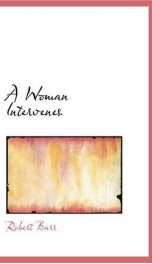
A Woman Intervenes
Series:
Unknown
Year:
Unknown
Raiting:
4.5/5
This book was converted from its physical edition to the digital format by a community of volunteers. You may find it for free on the web. Purchase of the Kindle edition includes wireless delivery.
Show more
add to favoritesadd In favorites

The Triumphs of Eugene Valmont
Series:
Unknown
Year:
Unknown
Raiting:
2.5/5
Classic novel. According to Wikipedia: "Robert Barr (September 16, 1849 – October 21, 1912[1]) was a British-Canadian novelist, born at Glasgow, Scotland. He immigrated to Upper Canada at age four and was educated in Toronto at Toronto Normal School. Barr was headmaster of the Central School, Windsor, Ontario, and in 1876 became a member of the staff of the Detroit Free Press, in which his contributions appeared under the signature "Luke Sharp." In 1881 he removed to London, to establish there the weekly English edition of the Free Press, and in 1892 founded The Idler magazine, choosing Jerome K. Jerome as his collaborator (wanting, as Jerome said, "a popular name"). He retired from the coeditorship in 1895."
Show more
add to favoritesadd In favorites
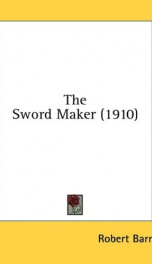
The Sword Maker
Series:
Unknown
Year:
Unknown
Raiting:
3/5
Novel by the teacher, journalist, editor and novelist, born in Glasgow, Scotland and educated in Canada. In 1876 he became a member of the staff of the Detroit Free Press, in which his contributions appeared under the signature "Luke Sharp." In 1881 he removed to London, to establish the weekly English edition of the Free Press, and in 1892 he joined Jerome K. Jerome in founding the Idler magazine, from whose co-editorship he retired in 1895. He was a prolific author, producing many popular novels of the day. --This text refers to the Paperback edition.
Show more
add to favoritesadd In favorites
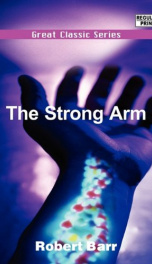
The Strong Arm
Series:
Unknown
Year:
Unknown
Raiting:
4/5
This book was converted from its physical edition to the digital format by a community of volunteers. You may find it for free on the web. Purchase of the Kindle edition includes wireless delivery.
Show more
add to favoritesadd In favorites

Revenge!
Series:
Unknown
Year:
Unknown
Raiting:
4/5
Purchase of this book includes free trial access to www.million-books.com where you can read more than a million books for free. This is an OCR edition with typos. Excerpt from book: A DYNAMITE EXPLOSION. UPRE sat at one of the round tables in the Cafe Vernon, with a glass of absinthe before him, which he sipped every now and again. He looked through the open door, out to the Boulevard, and saw passing to and fro, with the regularity of a pendulum, a uniformed policeman. Dupre laughed silently as he noticed this evidence of law and order. The Cafe Vernon was under the protection of the Government. The class to which Dupre belonged had sworn that it would blow the cafe into the next world, therefore the military-looking policeman walked to and fro on the pavement to prevent this being done, so that all honest citizens might see that the Government protects its own. People were arrested now and then for lingering around the cafe; they were innocent, of course, and by-and-by the Government found that out and let them go. The real criminal seldom acts suspiciously. Most of the arrested persons were merely attracted by curiosity. ' There,'said one to another, 'the notorious Hertzog was arrested.' The real criminal goes quietly into the cafe, and orders his absinthe, as Dupre had done. And the policeman marches up and down keeping an eye on the guiltless. So runs the world. There were few customers in the cafe, for people feared the vengeance of Hertzog's friends. They expected some fine day that the cafe would be blown to atoms, and they preferred to be taking their coffee and cognac somewhere else when that time came. It was evident that M. Sonne, the proprietor of the cafe, had done a poor stroke of business for himself when he gave information to the police regarding the whereabouts of Hertzog, notwithstanding the fact that his cafe became suddenly the most noted one in the city, and that it now enjoyed the protection of the Government. Dupre seldom ...
Show more
add to favoritesadd In favorites
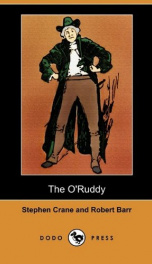
The O'Ruddy
Series:
Unknown
Year:
Unknown
Raiting:
4/5
Stephen Crane (1871-1900) was an American novelist, poet and journalist. He is best known for his novel Red Badge of Courage (1895). He lived in New York City a bohemian life where he observed the poor in the Bowery slums as research for his first novel, Maggie: A Girl of the Streets (1893). He became shipwrecked in route to Cuba in early 1897, an experience which he later transformed into his short story masterpiece, The Open Boat (1898). Other works include: Active Service (1899), Whilomville Stories (1900) and The O'Ruddy (with Robert Barr) (1903). Robert Barr (1850-1912) was a British-Canadian novelist, born at Glasgow, Scotland. He was educated at the Normal School of Toronto, Canada, was headmaster of the Central School, Windsor, Ontario, and in 1876 became a member of the staff of the Detroit Free Press, in which his contributions appeared under the signature "Luke Sharp. " In 1881 he removed to London, to establish there the weekly English edition of the Free Press, and in 1892 founded The Idler magazine. Among his works are: From Whose Bourne (1896) and Jennie Baxter, Journalist (1899).
Show more
add to favoritesadd In favorites
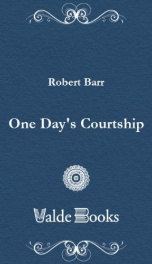
One Day's Courtship
Series:
Unknown
Year:
Unknown
Raiting:
4.5/5
One Day's Courtship. please visit www.valdebooks.com for a full list of titles
Show more
add to favoritesadd In favorites

Jennie Baxter, Journalist
Series:
Unknown
Year:
Unknown
Raiting:
3/5
Miss Jennie Baxter with several final and dainty touches that put to rights her hat and dress-a little pull here and a pat there-regarded herself with some complacency in the large mirror that was set before her as indeed she had every right to do for she was an exceedingly pretty girl.
Show more
add to favoritesadd In favorites
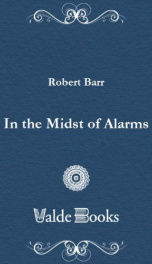
In the Midst of Alarms
Series:
Unknown
Year:
Unknown
Raiting:
4.5/5
In the Midst of Alarms. please visit www.valdebooks.com for a full list of titles
Show more
add to favoritesadd In favorites
What readers are saying
What do you think? Write your own comment on this author!
write a commentGenre
- Literature & Fiction
- Literature & Fiction / Classics
- Literature & Fiction / Poetry / Anthologies
- Literature & Fiction / Genre Fiction / Action & Adventure
- Law / United States
- Nonfiction / Education / Education Theory / History
- Literature & Fiction / Drama / British & Irish
- Sports / General
- Science / Juvenile literature
if you like Barr Robert try:
readers also enjoyed
What readers are saying
What do you think? Write your own comment on this author!
write a commentGenre
- Literature & Fiction
- Literature & Fiction / Classics
- Literature & Fiction / Poetry / Anthologies
- Literature & Fiction / Genre Fiction / Action & Adventure
- Law / United States
- Nonfiction / Education / Education Theory / History
- Literature & Fiction / Drama / British & Irish
- Sports / General
- Science / Juvenile literature
if you like Barr Robert try:
readers also enjoyed
Do you want to exchange books? It’s EASY!
Get registered and find other users who want to give their favourite books to good hands!



